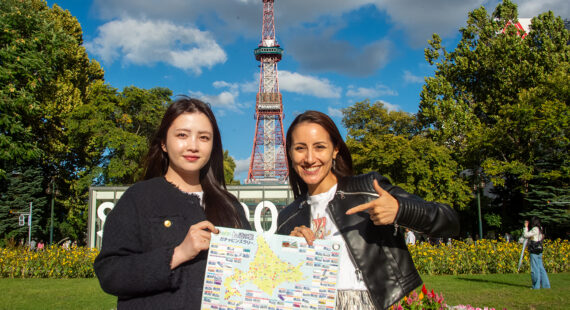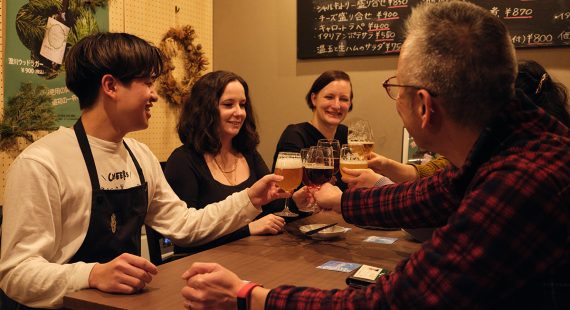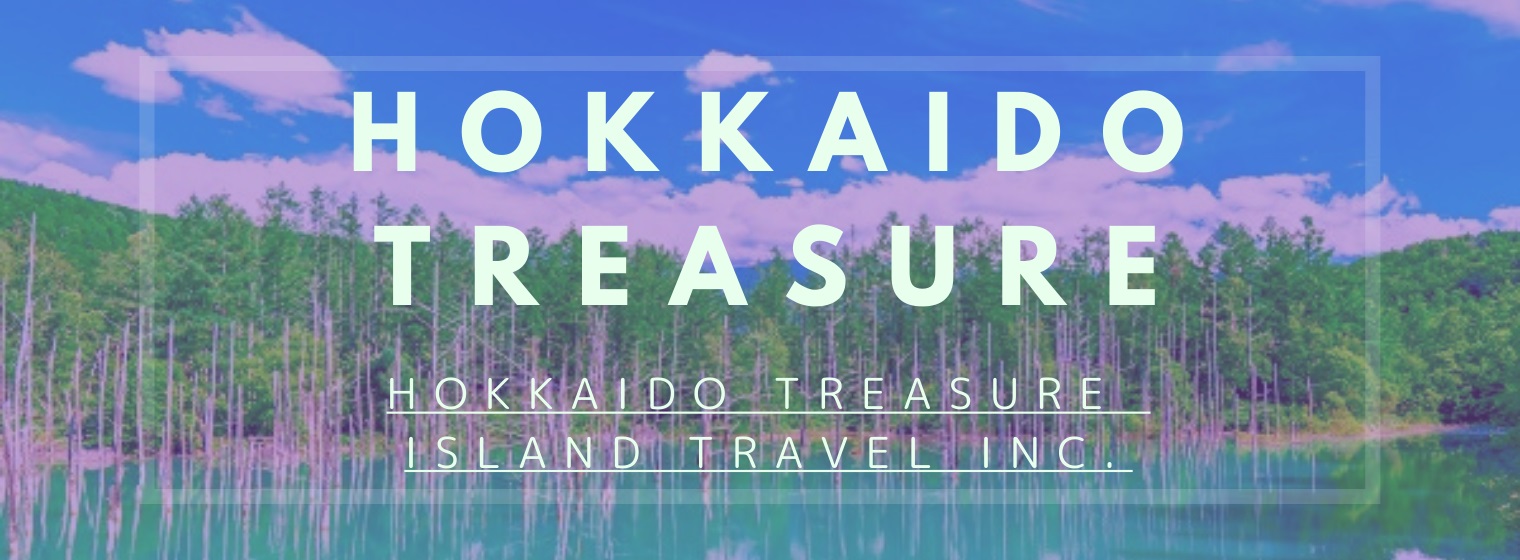(Written by Yuko Fujimori)
Located in the northernmost region of the long and narrow Japanese archipelago, Hokkaido is a rich treasure trove of nature. Many of the beautiful natural phenomena of snow and ice that only appear during harsh winter months cannot be seen in other parts of Japan. Why not visit Hokkaido in winter to see the works of art created by the interweaving of ice and snow?
Most parts of Hokkaido are located in the subarctic zone, in some places snow accumulates up to 10 meters a year and a town has the lowest recorded temperature at -40 °C.
The spectacular views of ice and snow can be seen mainly in eastern Hokkaido. Especially the drift ice in Abashiri and Monbetsu, cities facing the Sea of Okhotsk, where massive amounts of ice from Russia drift to those shores. It’s a symbol of Hokkaido’s winter and attracts many tourists from home and abroad every year.
The Shiretoko Peninsula on the eastern tip of Hokkaido, which has been registered as a World Heritage site, is home to pristine nature in the sea and mountains where endangered birds and wildlife such as Steller’s sea eagles can be observed.
Winter cold can be so severe, not only along the shores, but also in inland areas of Hokkaido, such as Daisetzusan National Park which is lined with mountains that rise to 2,000-meter-high peaks, and this chill makes for special beautiful scenery. Let’s take a closer look at those sceneries now.
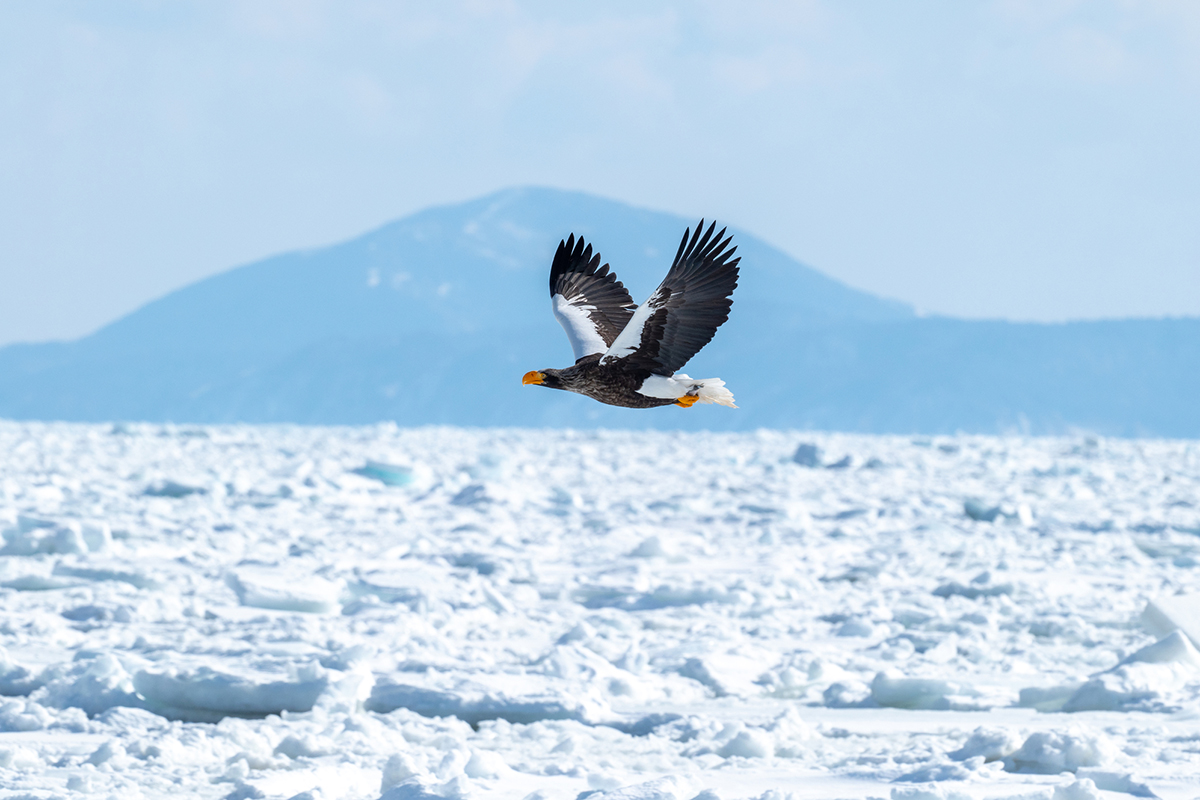
Table of contents
Table of Contents:
1. Drift Ice
2. Jewelry Ice
3. Diamond Dust
4. Sun Pillarst
5. Square Suns
6. Rime
7. Frost Flowers
8. Ice Bubbles
9. Pressure Ridges
10. Ice Falls
11. Ice Stalagmites
12. Steam Fog
1. Drift ice : A breathtaking powerful natural phenomenon
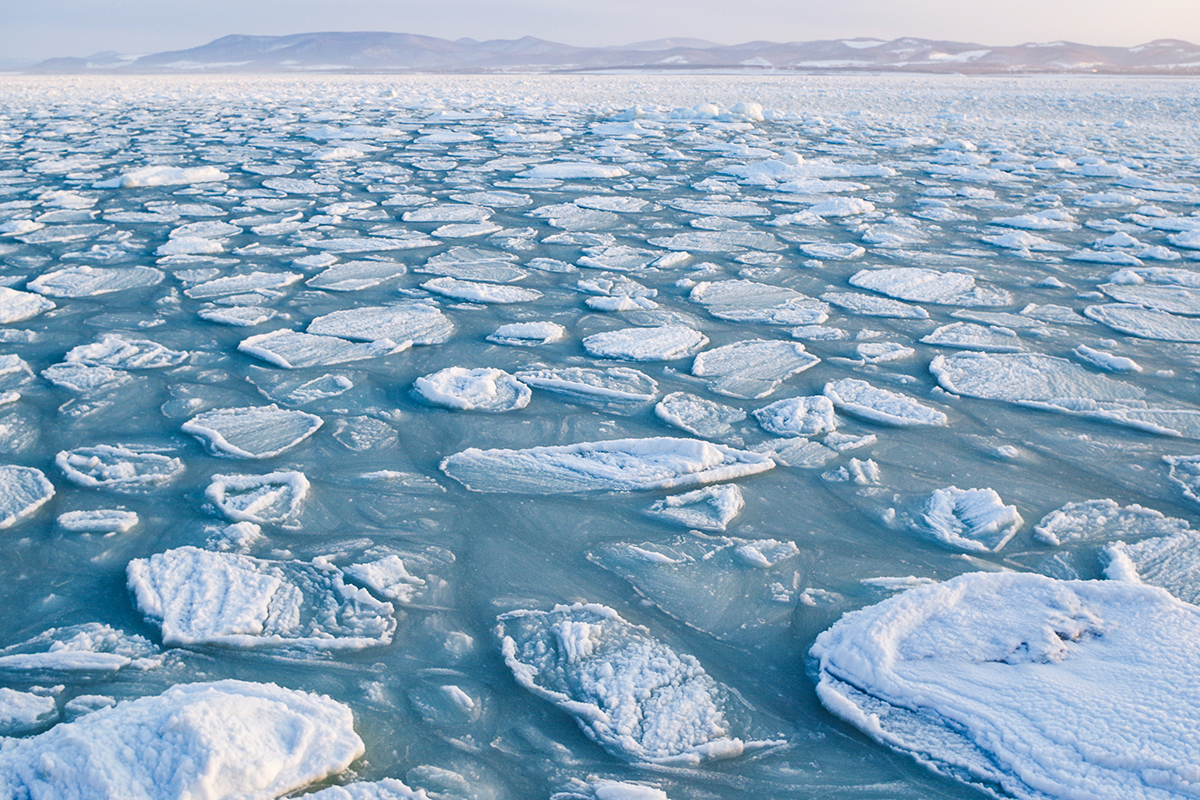
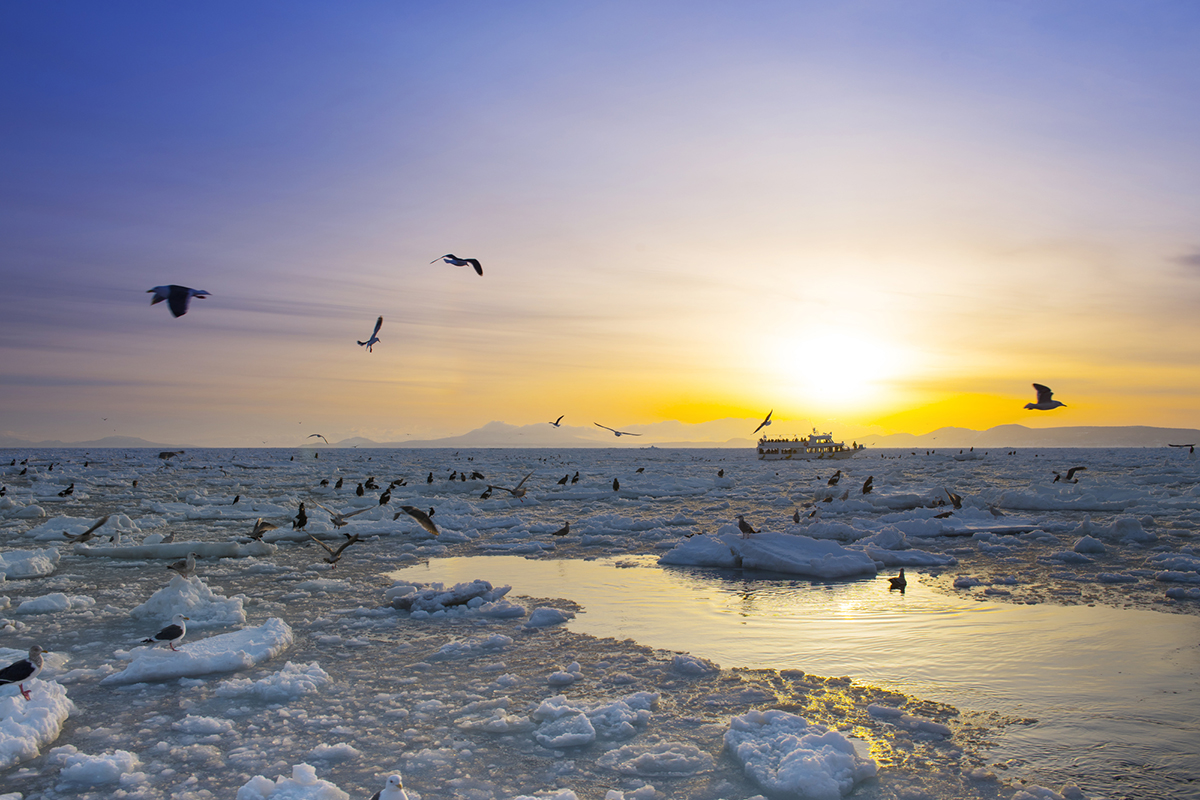
This appears in the Sea of Okhotsk, located north of Hokkaido, from late January to early March. Massive amounts of ice drift to the north east of Hokkaido in midwinter. The ice plains that fill the sea surface as far as can be seen are breathtaking. Hokkaido is the southernmost point in the northern hemisphere where drift ice arrives. Sightseeing icebreakers departing from the ports of Monbetsu and Abashiri located on the coast of the Sea of Okhotsk take visitors out to sea, where they can enjoy a 360° view of the drift ice around the boat. Drift ice watching tours are available not only from Hokkaido but also from Tokyo and other cities.
Normally, salty seawater does not freeze easily, but fresh water from the Amur River in Russia dilutes the salinity of the sea around the mouth of the river, freezing as less dense seawater in the surface layer of the Sea of Okhotsk, which then becomes drift ice that flows 2,000 km southward to Hokkaido.
When a large amount of drift ice rushes in, it can cover a port in a single night, and the sheer volume of ice shows the power of nature. In nearby towns, the sound of ice floes rubbing against each other can be heard all night long.
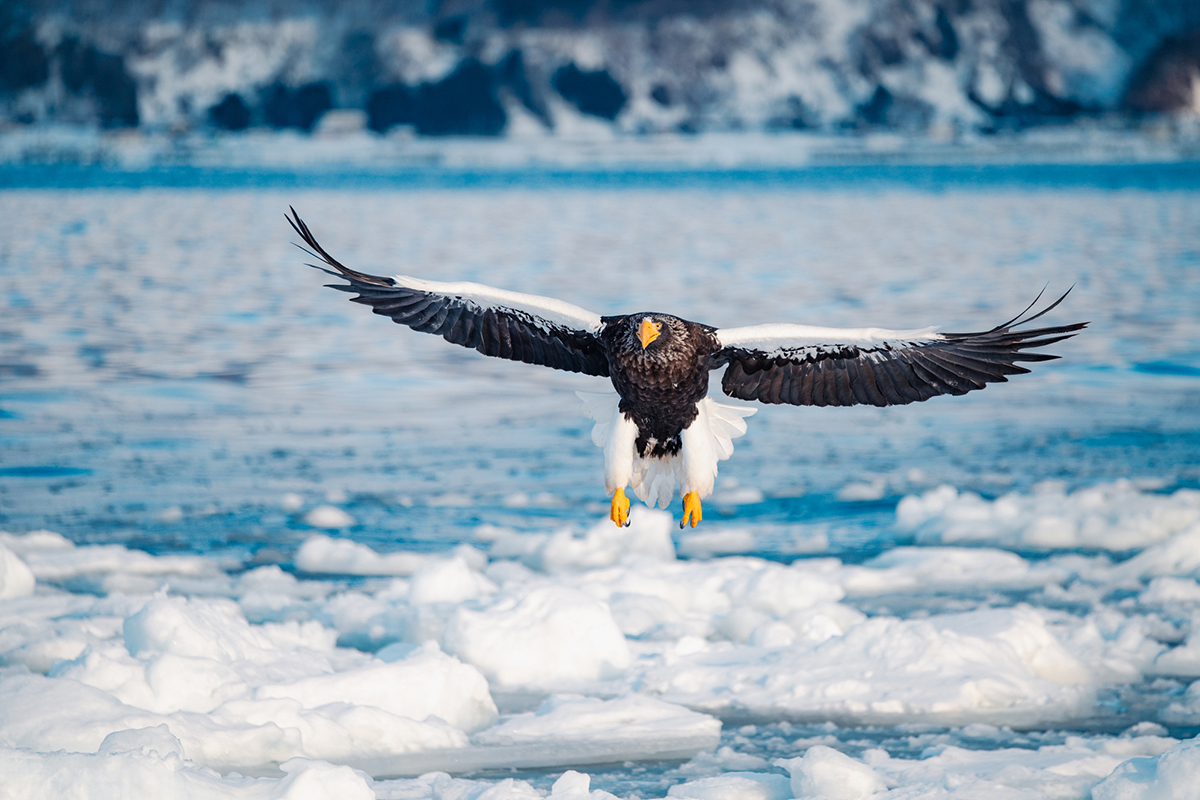

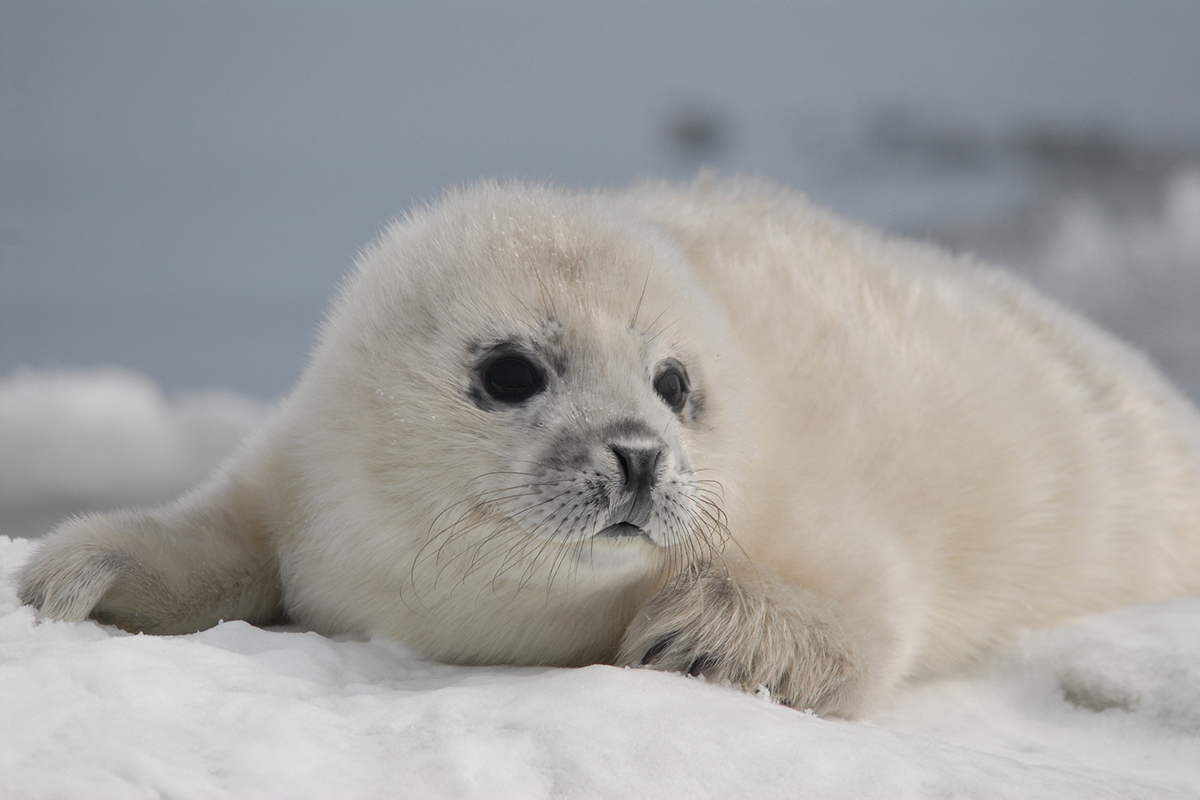
In the past, drift ice was frowned upon by fishermen because massive ice prevented them from fishing as they could not launch their boats when the port was blocked by ice.
However the value of the ice floes is being reevaluated recently, because the phytoplankton in the ice floes proliferate explosively in spring, and zooplankton such as krill, which eat the phytoplankton, increase, which in turn attract fish that eat them. This food chain brings a rich harvest of seafood to the area.
Rausu, located in the southeast of the Shiretoko Peninsula, is home to 700 white-tailed and Steller’s sea eagles in winter, making it ideal for birdwatching and attracting many birders every winter. Sometimes seals can be seen lying on the drift ice.
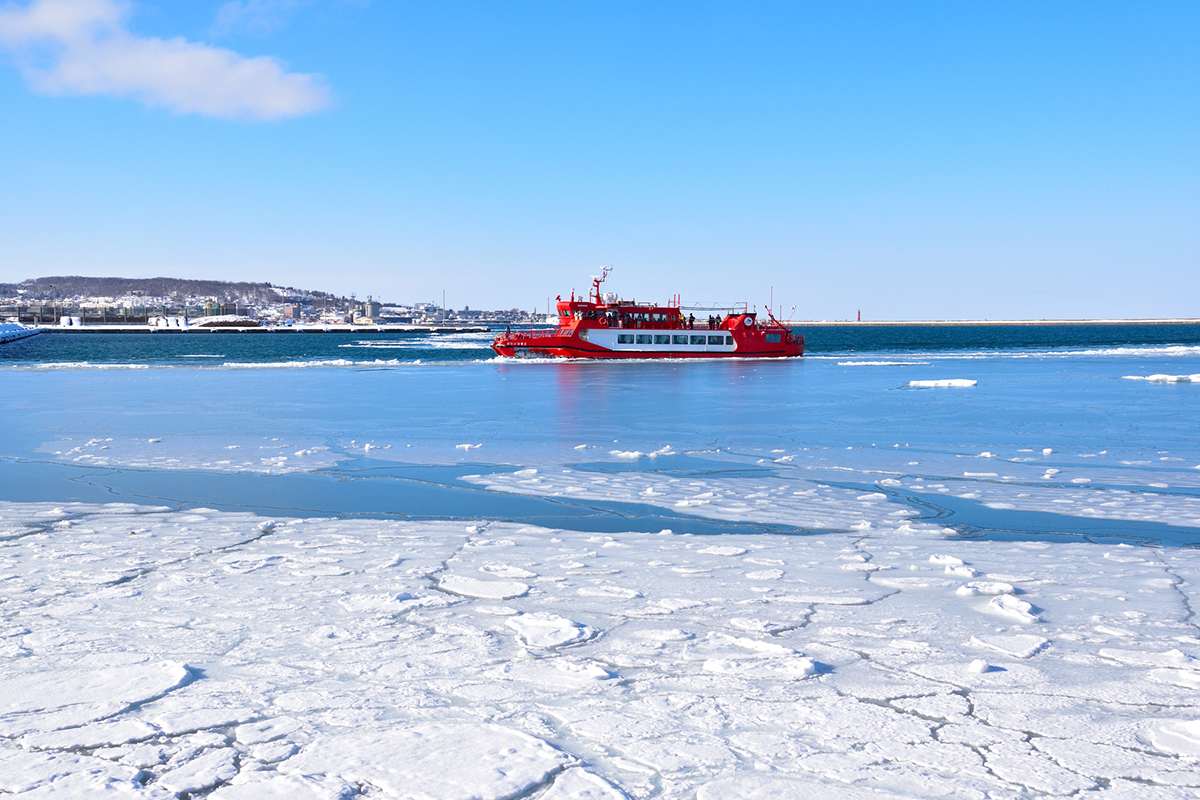
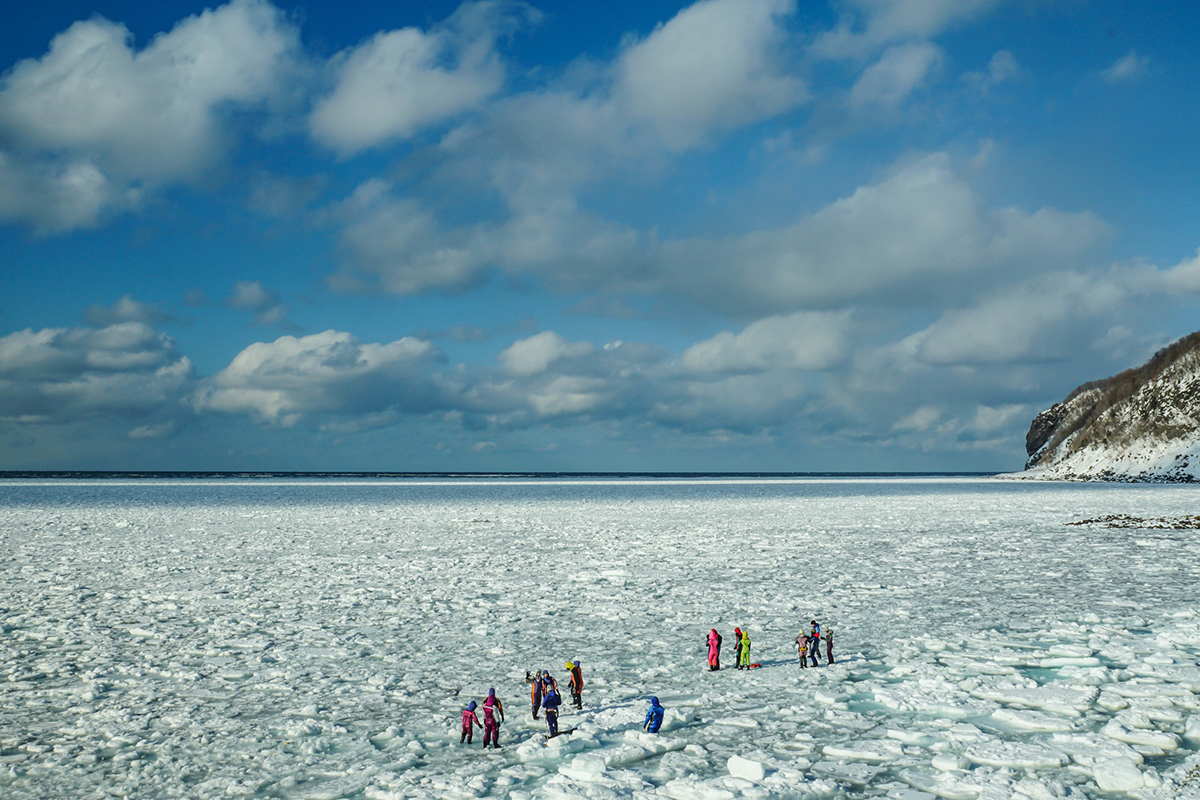
Some travel agents in the Shiretoko area offer tours such as drift ice walking and drift ice sea kayaking. Normally, it is not allowed to walk on drift ice, because it is so dangerous as it drifts on the cold sea and may break at any time. However, with guided tours, you can walk on it safely wearing a dry suit. This is an experience that can only be had in Hokkaido in Japan. Why not give it a try?
2. Jewelry ice, shining art of ice: Jewels of the coast appear only in midwinter
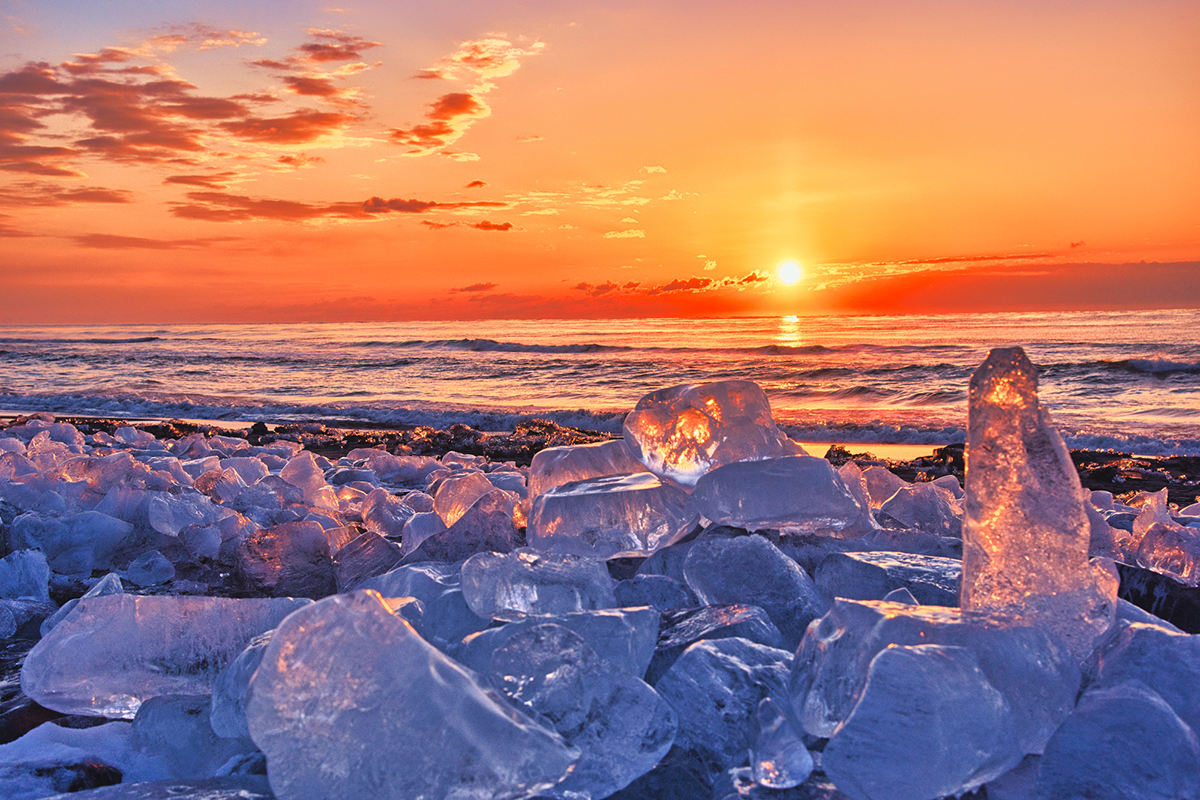
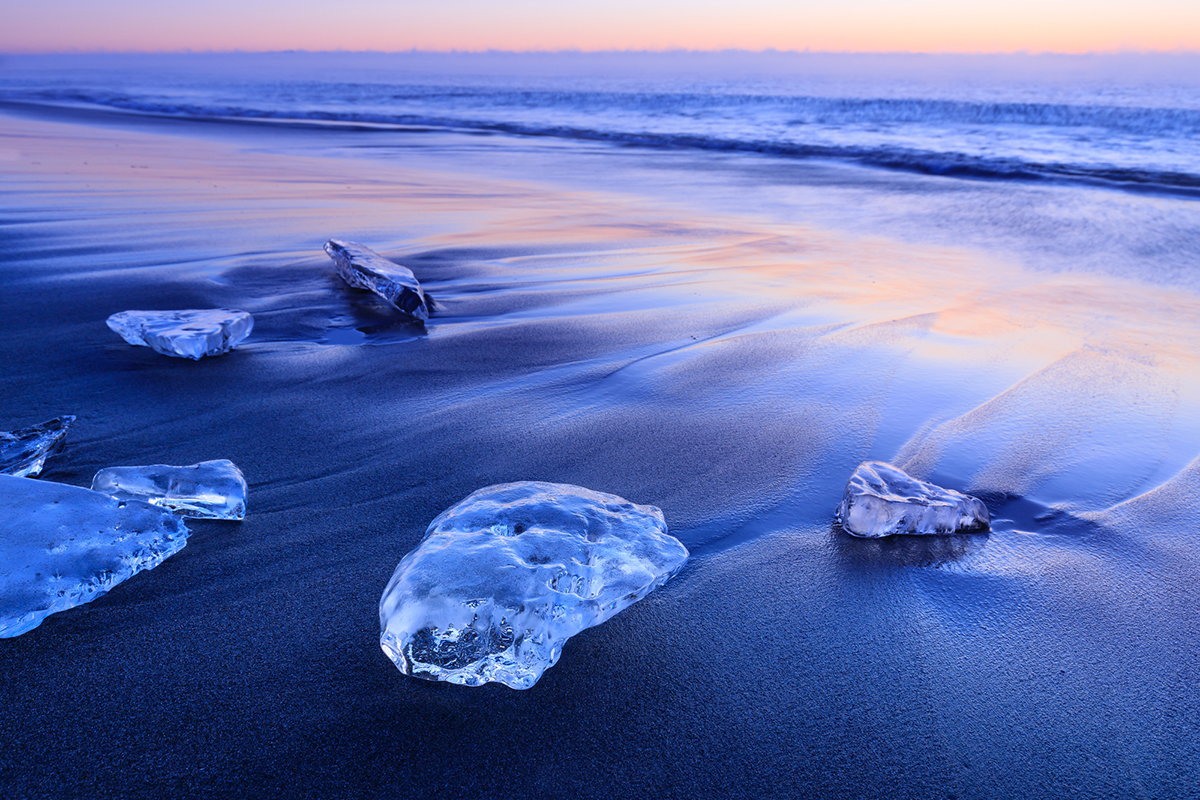
Jewelry ice has been attracting attention in recent years in Toyokoro, a town in Eastern Hokkaido which faces the Pacific Ocean. In midwinter, many large and small blocks of ice washed up on the coastline sparkle in the sunlight.
The various sizes of ice are formed at the mouth of the Tokachi River that runs through the town. Ice on the river is carried to the Pacific Ocean and washed up on the nearby beaches. The rounded ice cubes, which have been caught in the waves, reflect the colors of the sky and the sunlight, changing their color in various ways. They used to be known only to locals. An amateur photographer, Urashima Hisashi, named those ice blocks “jewelry ice” and started to use the name in his photos. It was introduced by an Internet news site in 2016 and got a lot of attention. The following year, in 2017, it was featured in the NY Times electronic edition and its popularity spread overseas as well.
Depending on the sunlight angle, the ice changes its color from orange and yellow in the morning to blue in the afternoon. The article describes it as looking like sapphires, topaz, and opals.
Nowadays, many people come to see jewelry ice on the beach in the middle of winter. It has become a new hot spot in Hokkaido in winter. Locals go to the beach and frequently update the status of the jewelry ice on the town’s website. Please check it out when you visit.
Jewelry Ice Toyokoro Tourism Bureau
3. Diamond dust: Sparkling ice crystals in the air
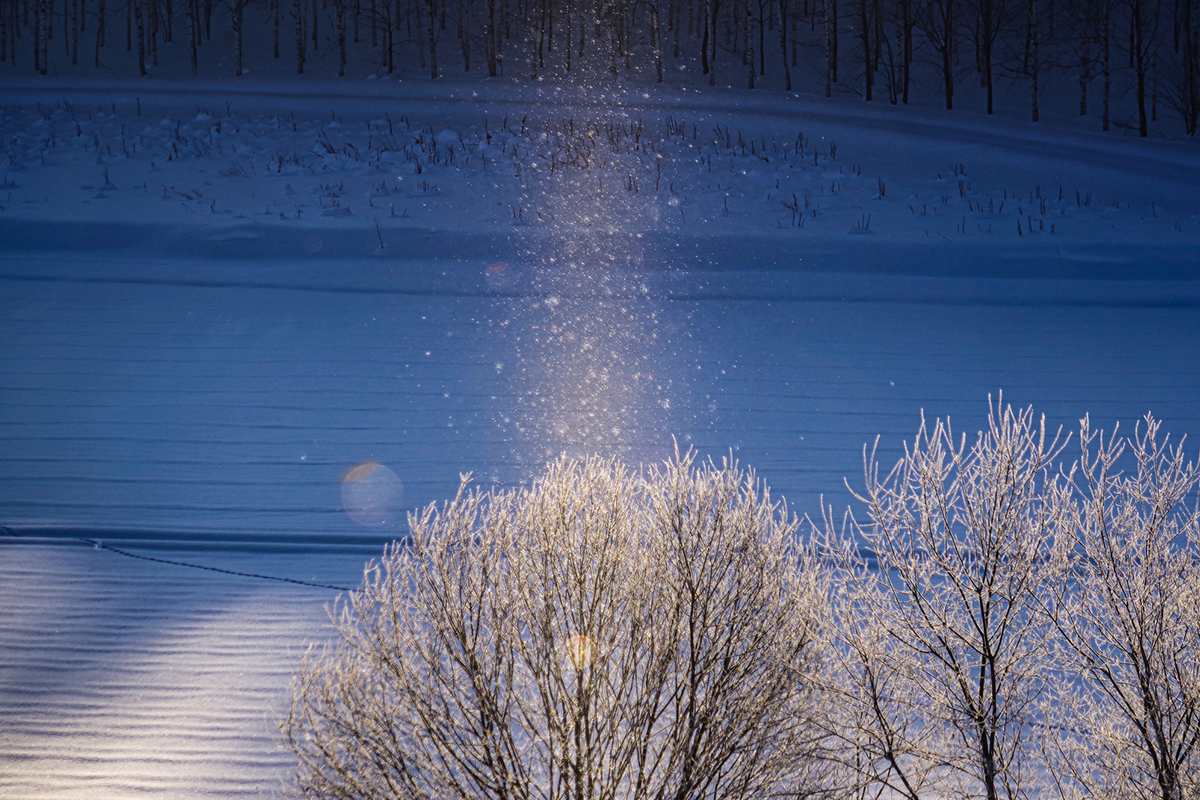
On bitterly cold mornings, people sometimes see tiny ice particles glistening in the light due to radiative cooling , a phenomenon where the air on the earth’s surface heated by the sun during the day rises into the sky at night and causes the air on the earth’s surface to gradually cool.
These sparkling ice crystals are called “diamond dust”. Pillar- or plate-shaped ice crystals float in the air or drift as they fall slowly, and the sunlight reflects off those ice crystals. Diamond dust is also referred to as a ground-level cloud composed of tiny ice crystals. The process of forming diamond dust is the same as that which occurs in clouds when snow crystals are formed in the clouds above.
Diamond dust can only be observed in extremely cold regions, such as high mountains or inland areas, and only when the conditions are right, such as -10°C or lower, clear skies, no wind, dawn or morning, and high humidity. In Hokkaido, it can be seen in Asahikawa and Biei in northern Hokkaido and Tokachi in eastern Hokkaido. The sparkling light particles on a bitterly cold morning are as fantastic and beautiful as a scene from a fairy tale.
4. Sun pillars: A spectacular scenery of light
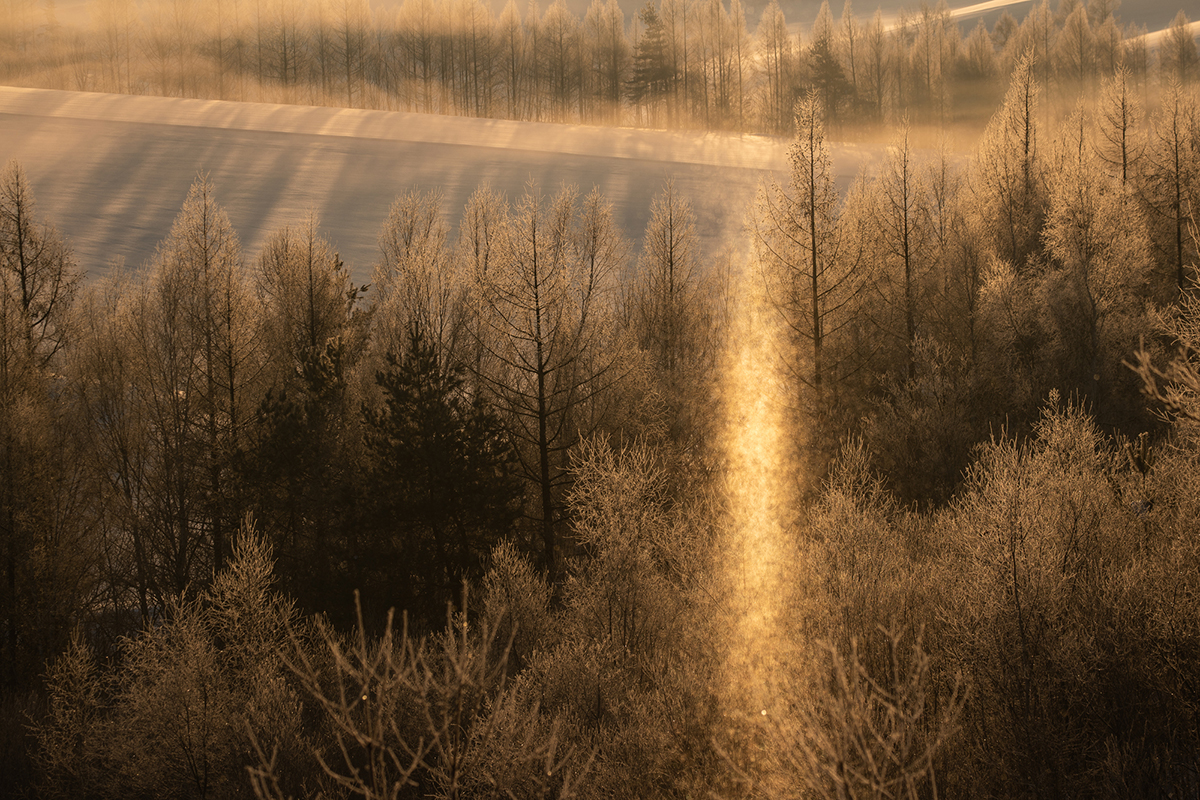
A divine pillar of light extending from beneath the sun is called the sun pillar. This phenomenon occurs when diamond dust appears and sunlight shines on floating ice crystals. When the hexagonal plate-shaped crystals in the diamond dust fall slowly downward, the rays of sunlight hitting them are reflected upward and downward. To the eye of the observer, it looks like a column of light stretching up and down as an imaginary image of the sun.
It is very rarely seen, and occurs at sunrise or sunset. Like diamond dust, it can be seen in inland areas of Hokkaido like Biei.
5. Square suns: Magic worked by a temperature difference of the sea
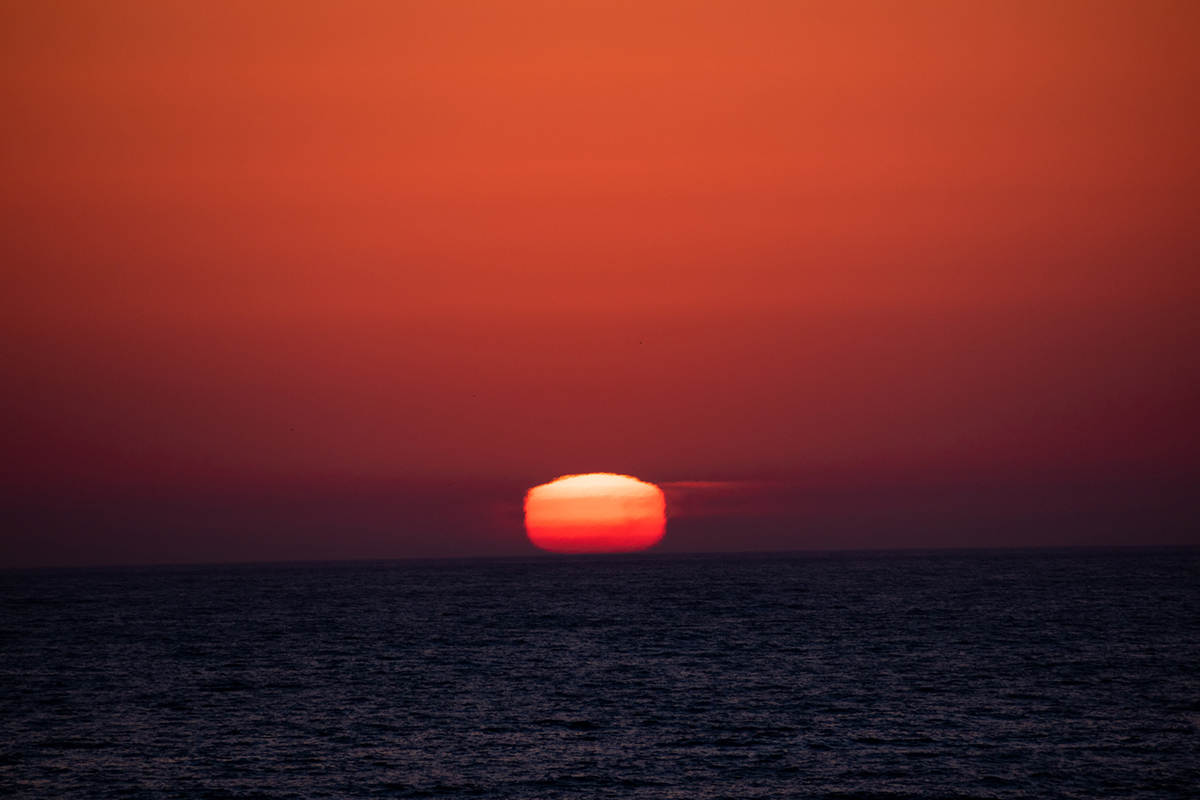
The sun, which is supposed to be round, appears out of the sea in a square shape. This “square sun” phenomenon, which looks as if a tube of light is protruding from the sea, is a type of mirage. It tends to appear when the temperature difference between the sea surface and the sky is large. It is often observed in Betsukai, a coastal town in the east of Hokkaido.
When radiative cooling occurs on the day after a sunny day, the temperature of the air near the water surface is lower than that above the water, and light is refracted at the boundary between warm and cold air, changing the shape of the sun. This sun is called a “square sun,” and it sometimes also appears oval, heart-shaped, or even jar-shaped.
6. Rime
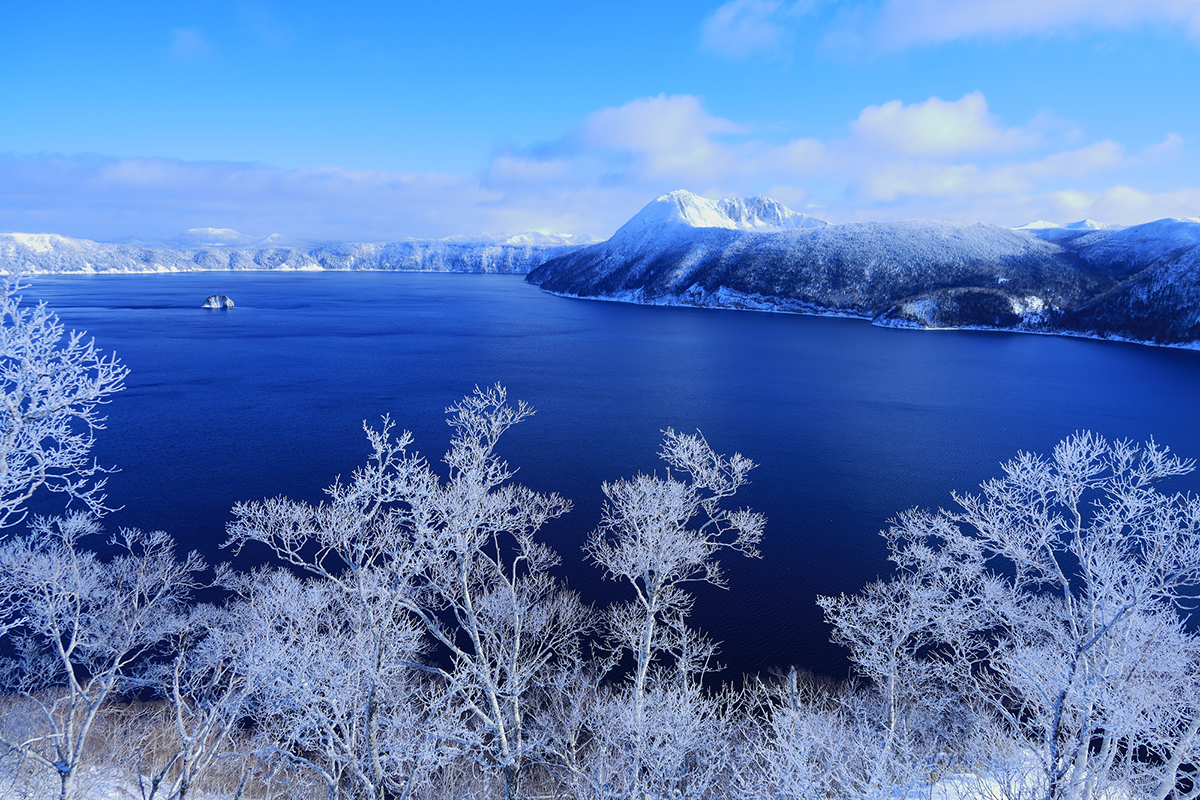
Even though there is no snowfall, the branches of trees are sometimes covered with white ice after fog passes through them. This phenomenon is called rime ice. In a subzero environment, fog particles are blown by the wind onto trees, and the stimulation causes the fog to turn into ice, which sticks to the branches. The small icicles stick to the tips of the branches, turning the grove a bright white color. The first observatory on Lake Mashu in eastern Hokkaido offers a spectacular view of this phenomenon. However, since the rime melts when exposed to light, it is best to go early in the morning when the sun has not yet risen.
7. Frost flowers: Transient white flowers on a lake
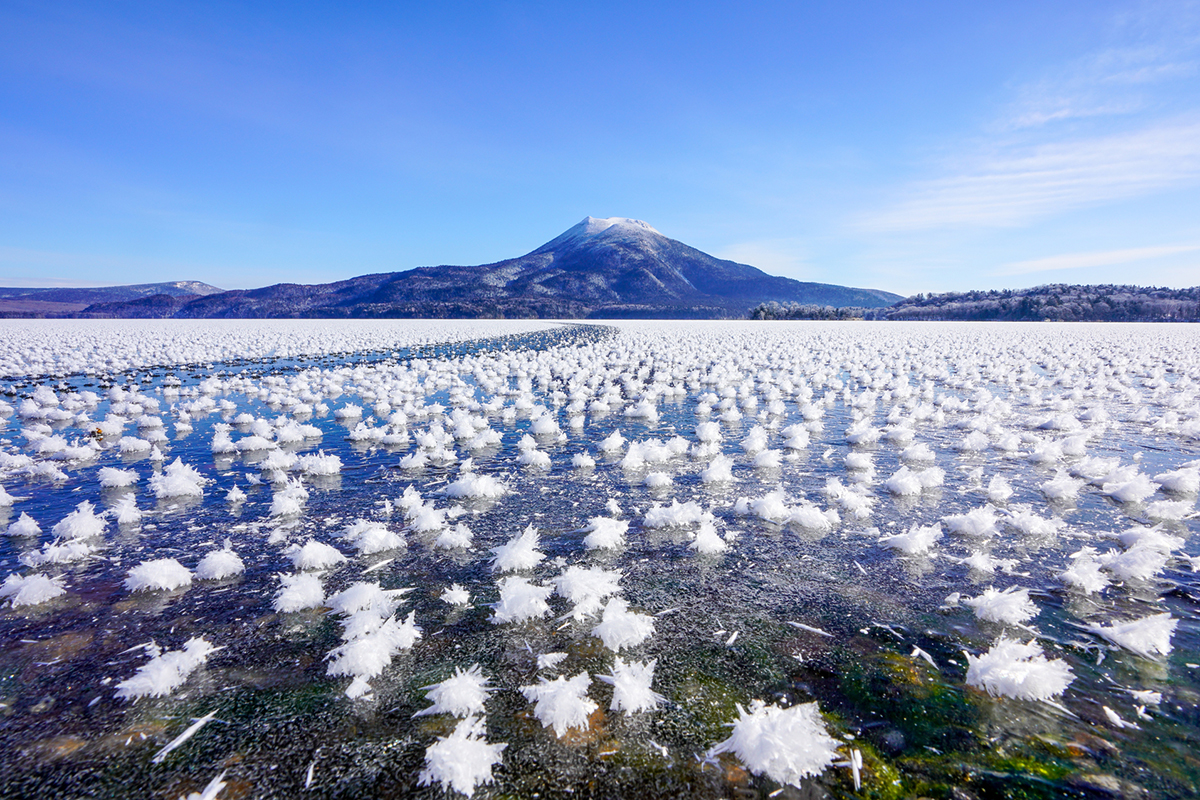
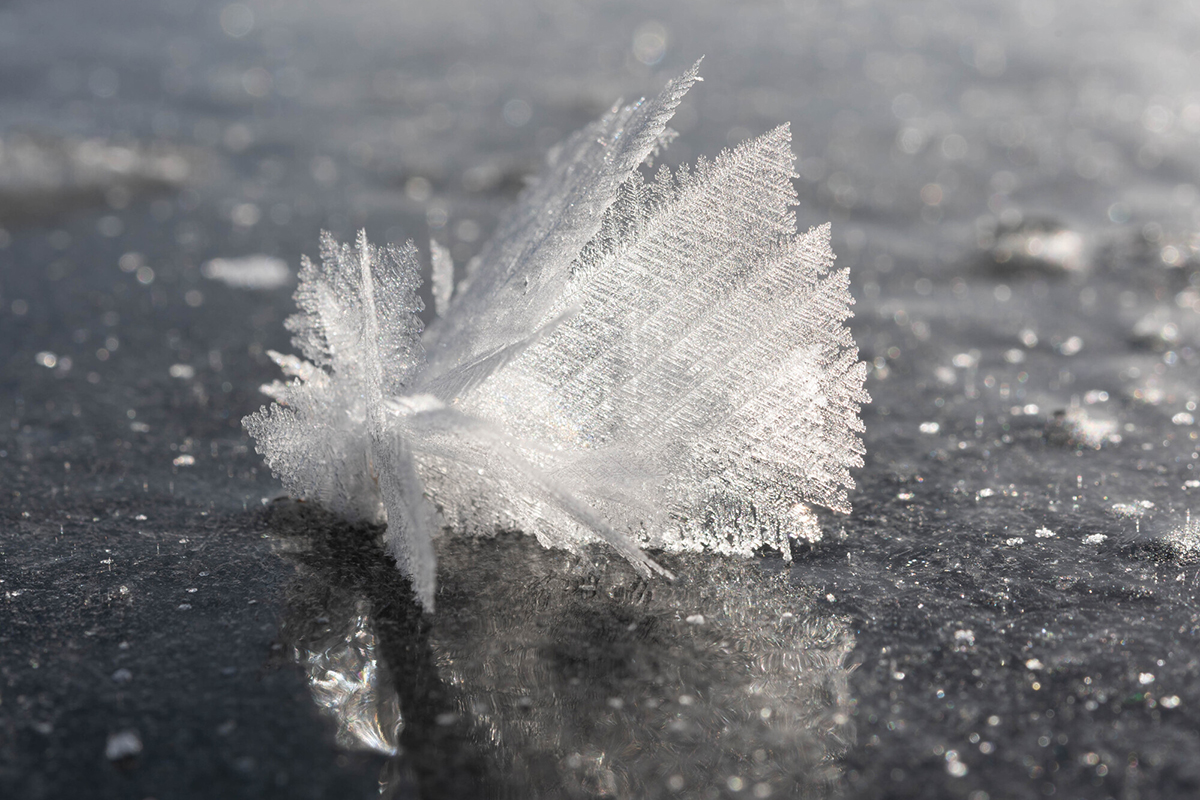
On a cold morning, white ice crystals spread across a lake like a field of flowers. This is a natural phenomenon known as “frost flowers”. The feather-like ice crystals are folded in layers like roses. Depending on the conditions under which it occurs, only a single crystal may form, which is called a “frost wing” or “angel feather.” It is more delicate than glasswork and so fragile that it can melt in an instant with a breath of air. It is truly art created by nature.
Water vapor adheres to the frozen lake and crystallizes, and the crystals fold over to form a flower-like shape. This phenomenon only appears when the temperature is minus 15 degrees Celsius, with no wind, and it is a clear early morning with no snowfall. It can be seen at Lake Akan, which is located 420 meters above sea level in the interior of eastern Hokkaido.
Lake Akan is high in elevation and surrounded by mountains such as Mount Ouakan, making it easy to produce the right conditions for frost flowers.
8. Ice bubbles: Unique patterns created by gas trapped in ice fields in lakes
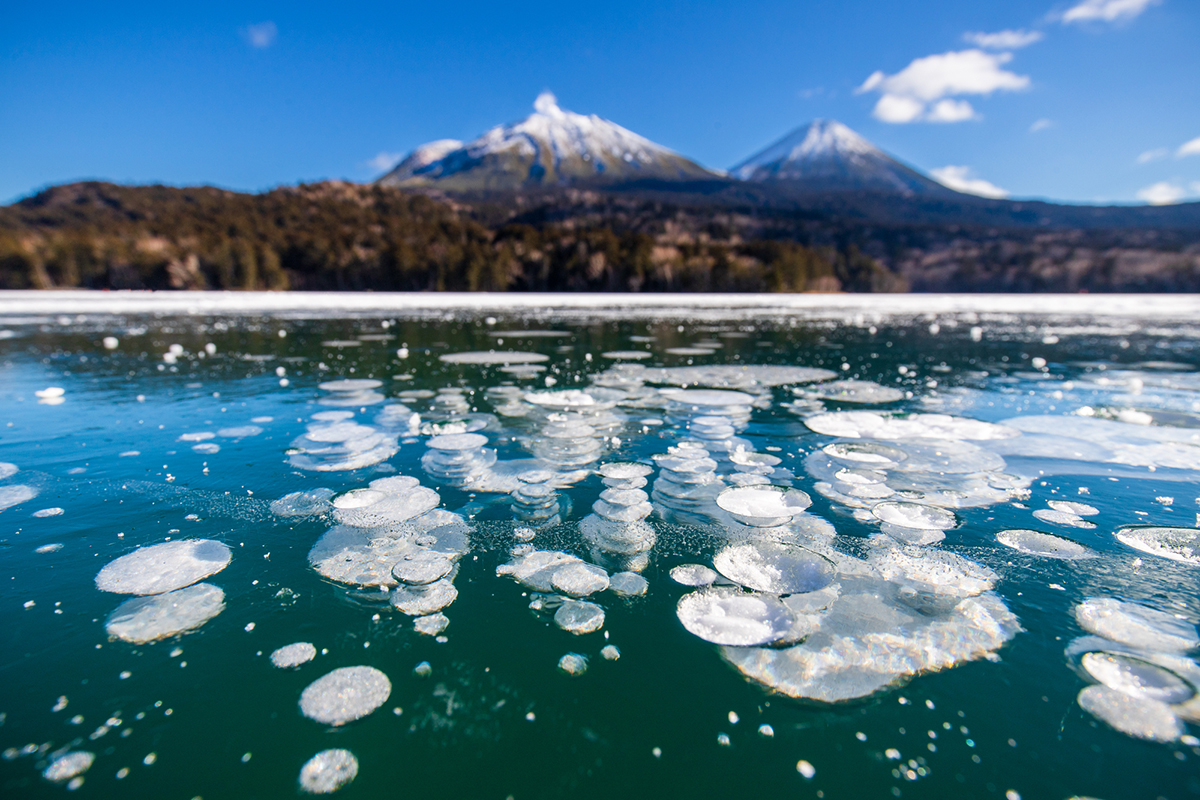

Bubbles trapped in the ice of a frozen lake. You can see bubbles where time seems to have stopped as they rise to the surface. They are formed when methane gas in the water accumulates under the ice and freezes in a bubble state as the ice grows in the lake.
The ice bubbles are not visible when snow completely covers the surface of the lake, so the best time to see them is when there is little snow on the ice from early January to early February (the situation varies from year to year). This phenomenon can be seen at Lake Nukabira in Kamishihoro in central Hokkaido.
9. Pressure Ridges: Omi-watari, traces of a god’s footsteps on the frozen lake
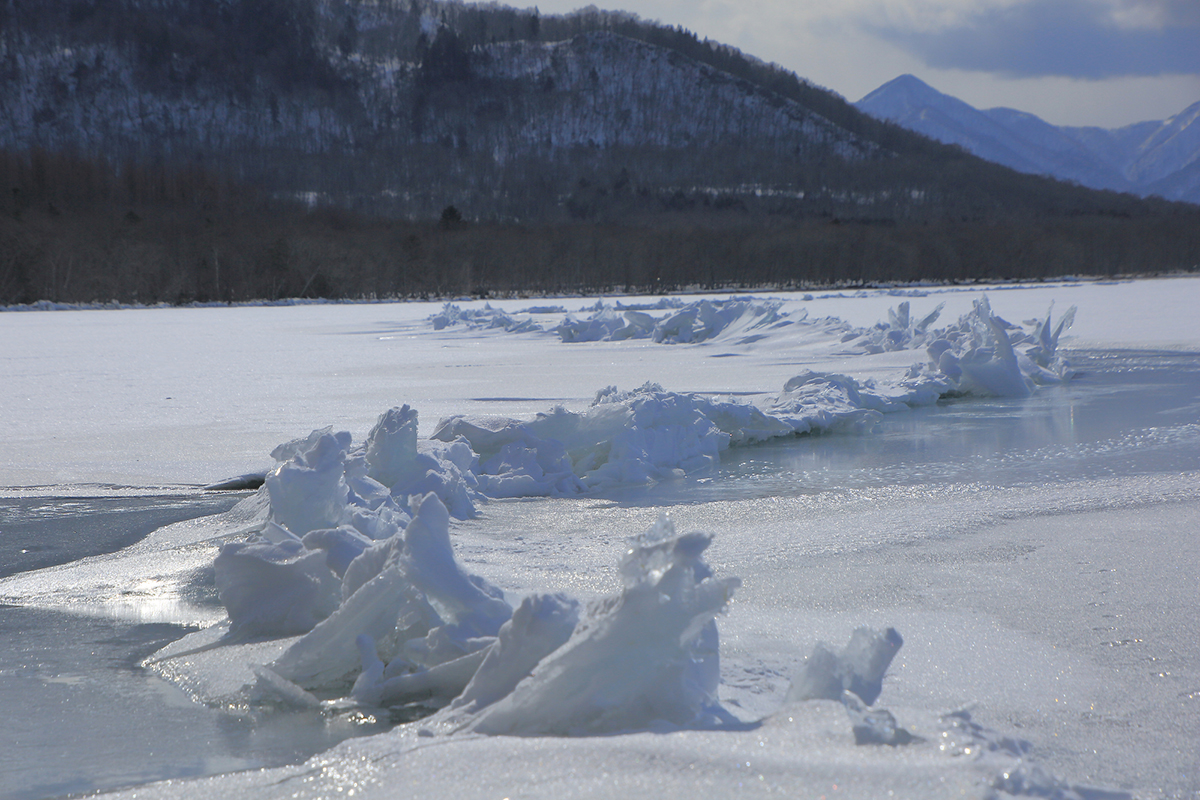
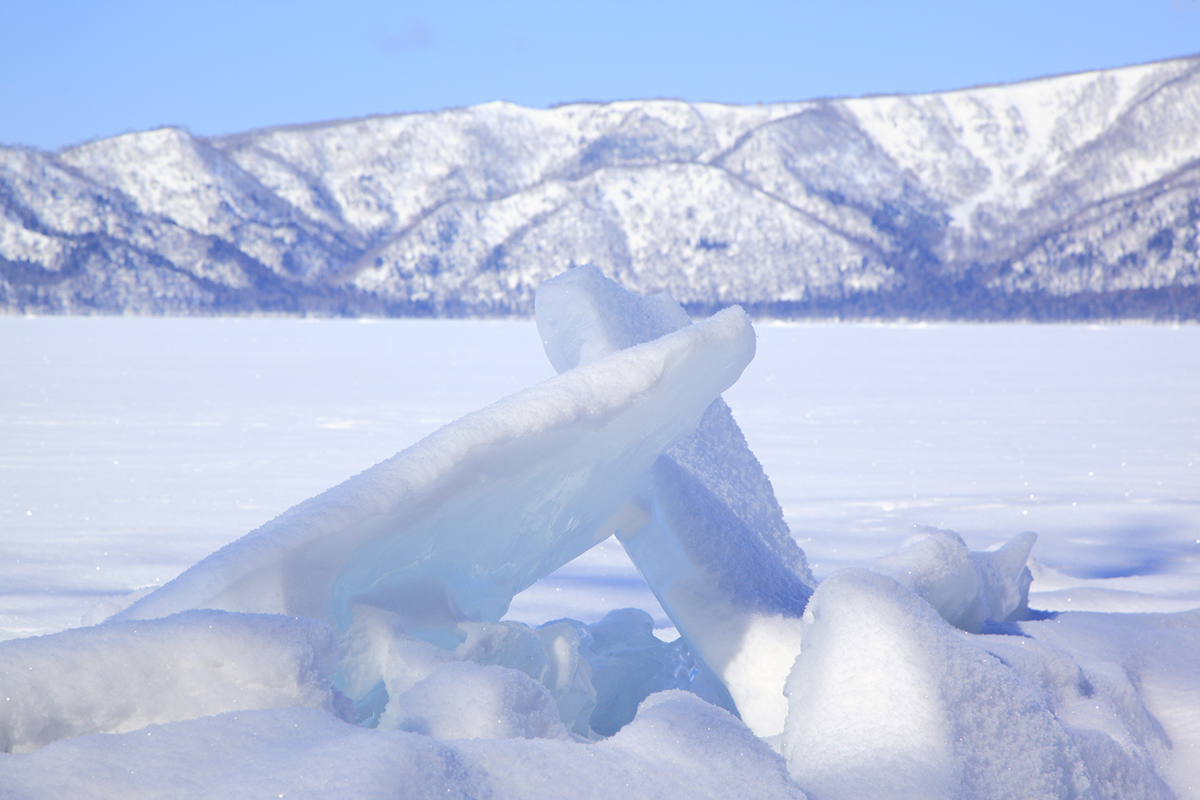
On winter mornings, a ridge on a frozen lake will sometimes rise to the surface as if it were a single path. This natural phenomenon is called a pressure ridge, or omi-watari in Japanese as the raised ice mark looks like “a trail where a deity has walked.” This phenomenon is famous on Lake Suwa in the center of Honshu, on the Japanese mainland. Local people around Lake Suwa have long told the fortune of the year’s agricultural harvest by the direction, location and height of the pressure ridge formed in the lake. In Hokkaido, pressure ridges also appear on Lake Kussharo, located inland in eastern Hokkaido.
Technically, this phenomenon is caused by expansion and shrinkage of the ice due to temperature differences. Ice expands when the temperature rises and shrinks when it falls. Ice on the surface of a frozen lake is an ice plate. It shrinks and cracks on a cold night, and new ice is formed between the cracks. When the temperature rises during the day, the entire lake ice plate expands. The newly-formed ice in the cracks is thin and weak, so the pressure from the expanding surrounding ice causes the weak part of the lake ice to rise up. The force is so great that it creates a loud noise and makes a pressure ridge that can stretch for kilometers.
It is not unusual for the Lake Kussharo temperature to drop below -10 ℃ in winter, and in the past a 10-kilometer-long and 2-meter-high ice ridge has appeared. In the language of the Ainu, the indigenous people in Hokkaido, it is called “Kamui paikai noka” meaning “the trail where a deity walked”. The enormous energy of nature can be felt from such huge pressure ridges.
10. Ice falls: Ice castles of serene beauty
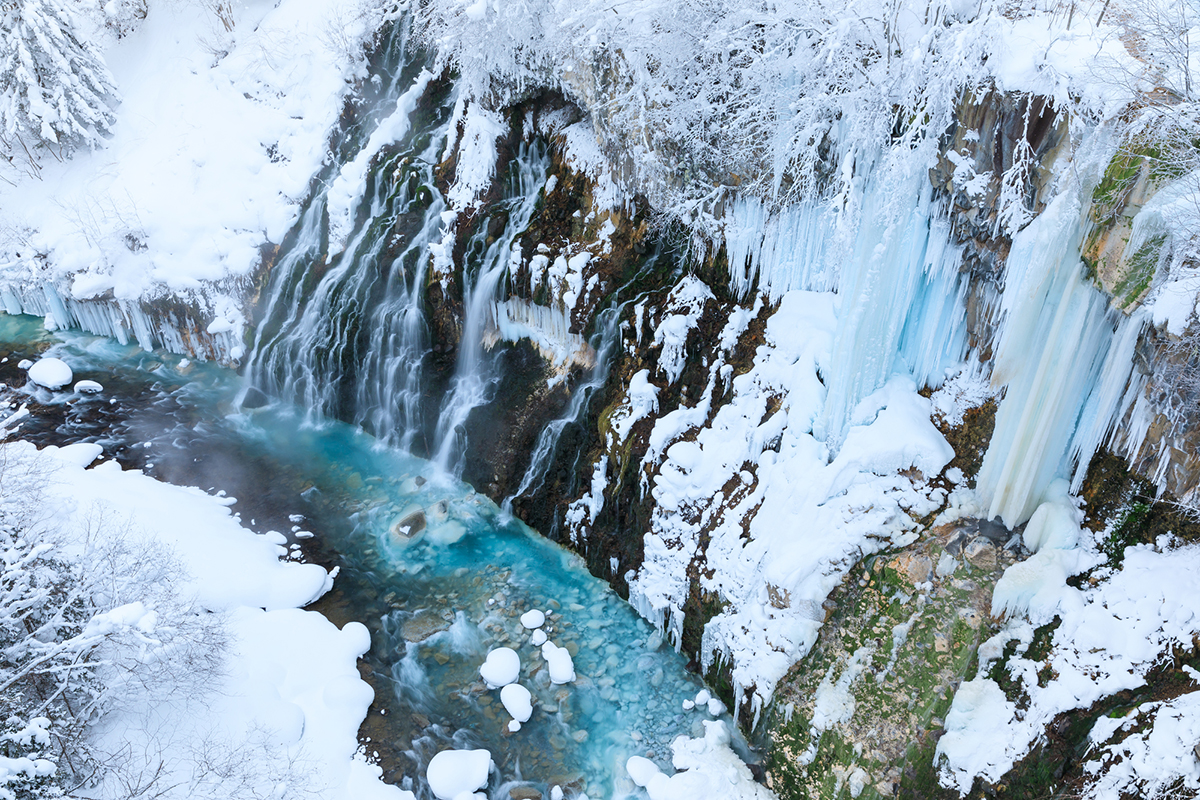
Waterfalls in summer are usually large volumes of water with a roaring sound, while winter “icefalls,” which can be seen throughout Hokkaido, are places of serene beauty. Water that flows through the waterfalls does not freeze easily, but waterfalls begin to freeze near the cold rocks and shallow banks as the cold weather and reduced water volume weaken the flow.
Even waterfalls with a heavy flow drip and drip, gradually forming countless icicles and freezing like a curtain of ice.
Shirohige Falls in Biei in the center of Hokkaido has blue colored water due to the aluminum content of the water. When the water freezes over during the cold season, it turns into a blue icefall with beautiful contrasts to the surrounding white snow.
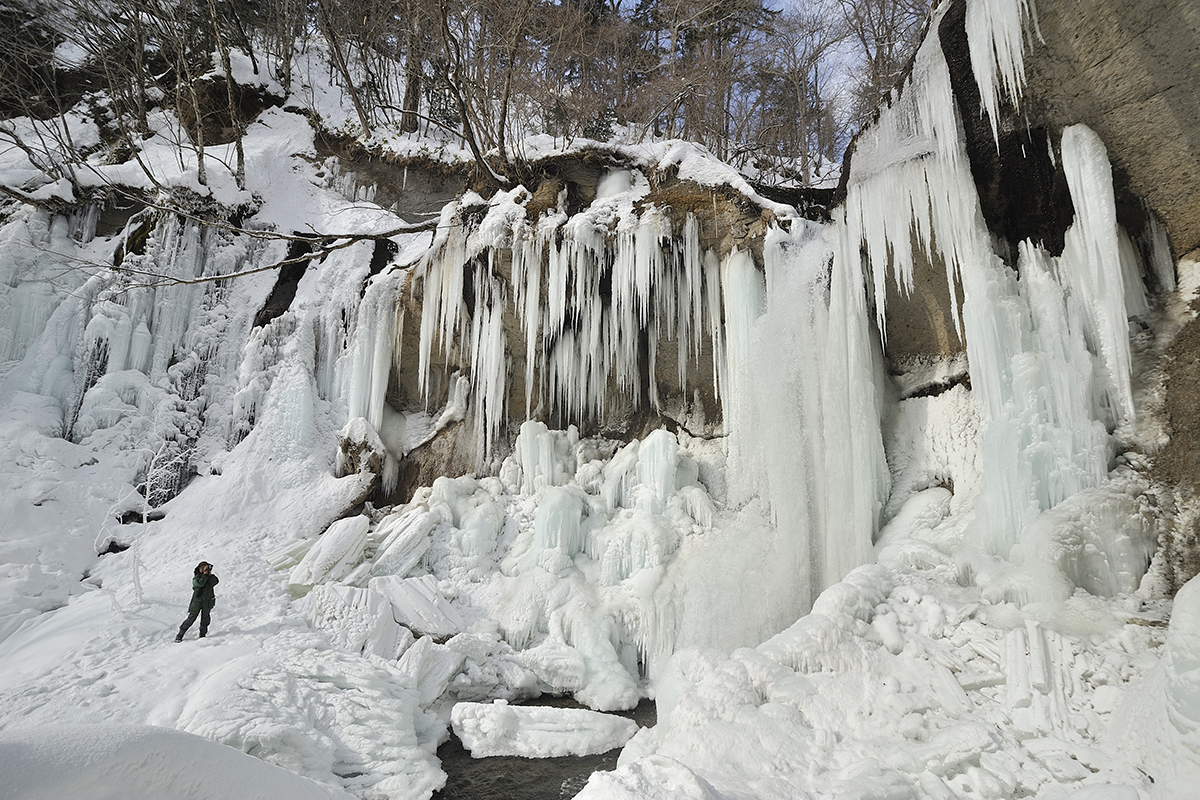
Shichijo Great Falls at Lake Shikotsu in central Hokkaido has a height of 15 meters. In winter, it freezes over to become a huge stack of widely spreading icicles, and is sometimes called an ice palace. Enjoy this spectacular ice art created by nature. There are no roads near the falls that are suitable for automobiles, and it requires about an hour’s walk to reach the falls. It is recommended to join a snow trekking tour to the falls in winter.
11. Ice stalagmites: Like ice Hattifatteners from the Moomin books
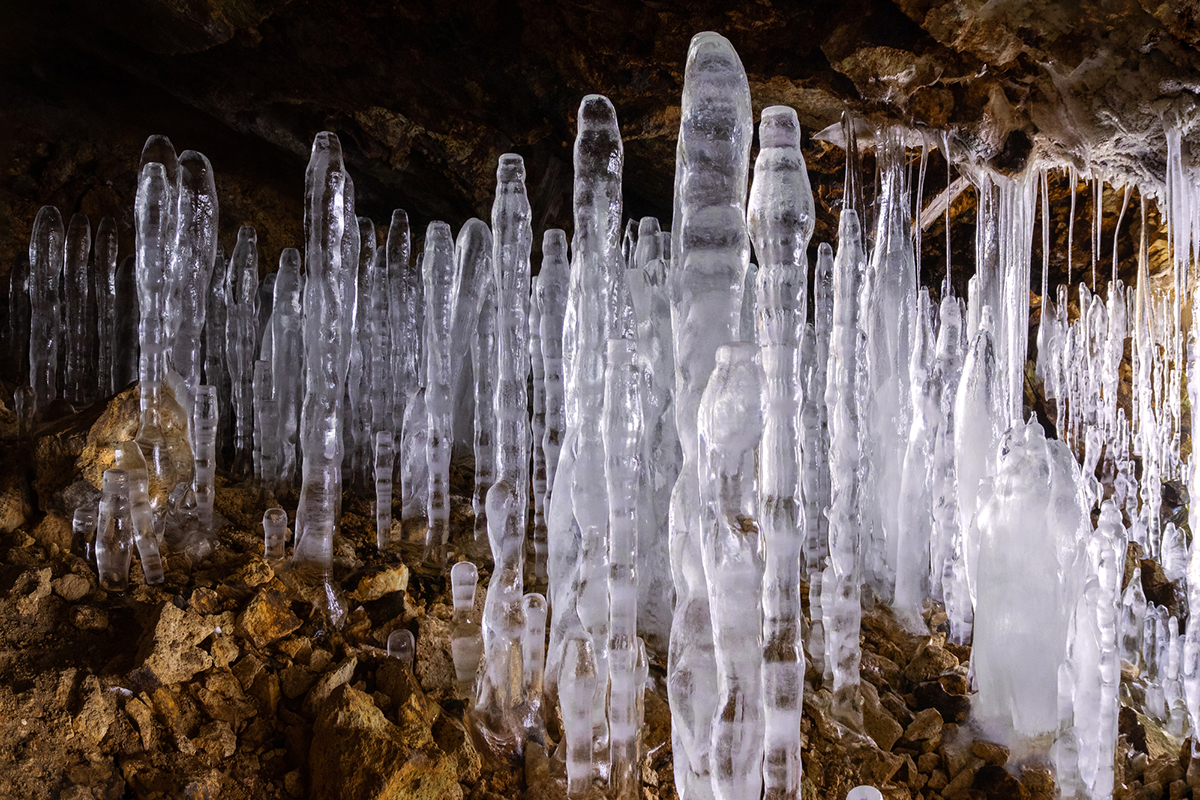
Hundreds of pillars of ice are formed in a large cavern by the accumulation of water droplets from the ice dripping from the ceiling. In contrast to icicles, they grow from the ground to the ceiling. They are called hyojun in Japanese, meaning “ice bamboo shoots,” because they resemble bamboo shoots made of ice.
Hyakujo-jiki Cave in Date in southern Hokkaido is famous for ice stalagmites. Locals call them “Ice Hattifatteners”, named after the mysterious creatures from the Moomin series written by Finnish author Tove Jansson, or “Nyoro-nyoro”, a Japanese name meaning something long, thin and wiggly.
Thousands of ice stalagmites, some as large as 2 meters or more, can be seen in this cave from mid-January to mid-March. The way to the cave is not easy. It is recommended to join tours by local travel agents.
12. Steam fog
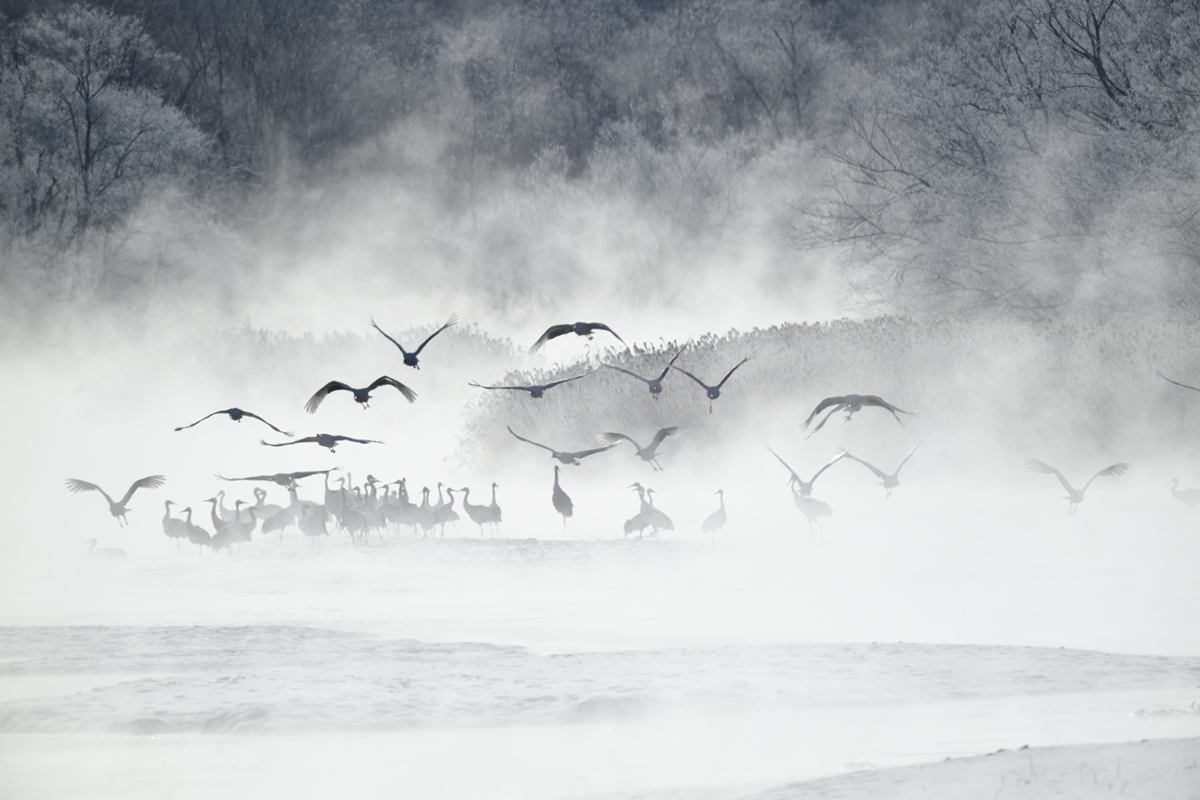
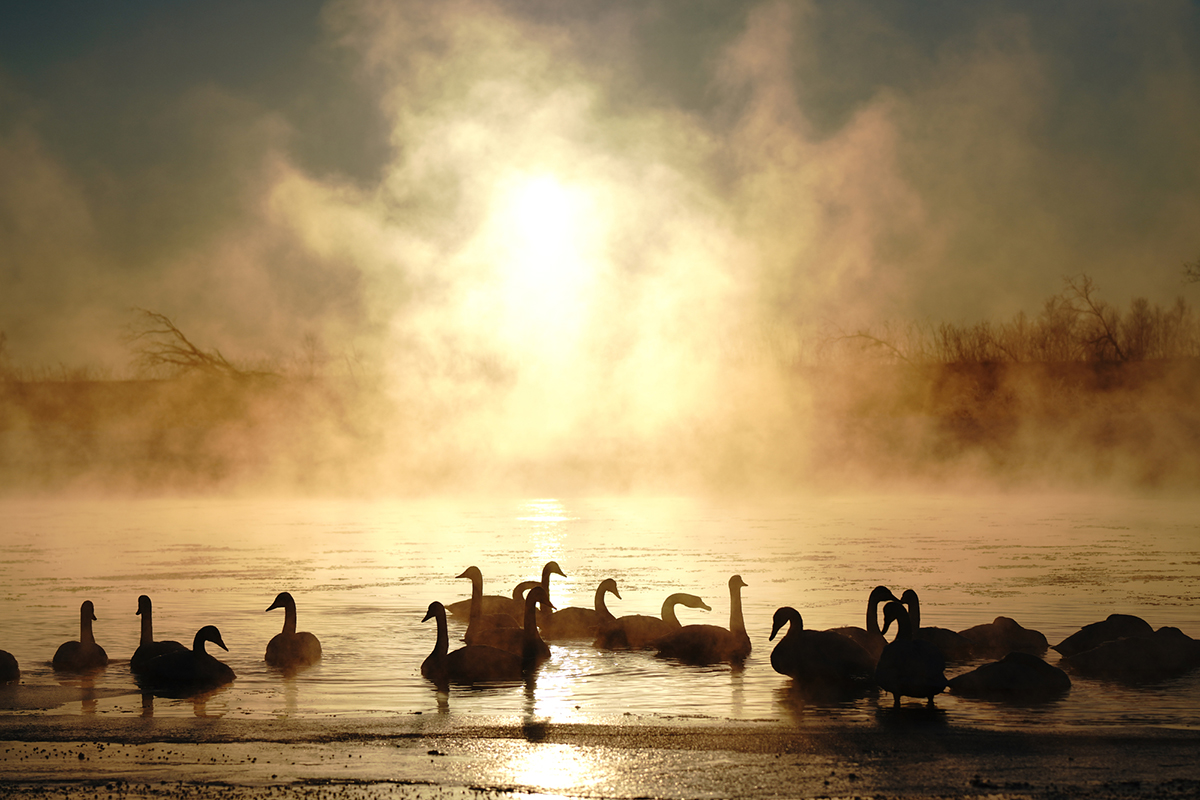
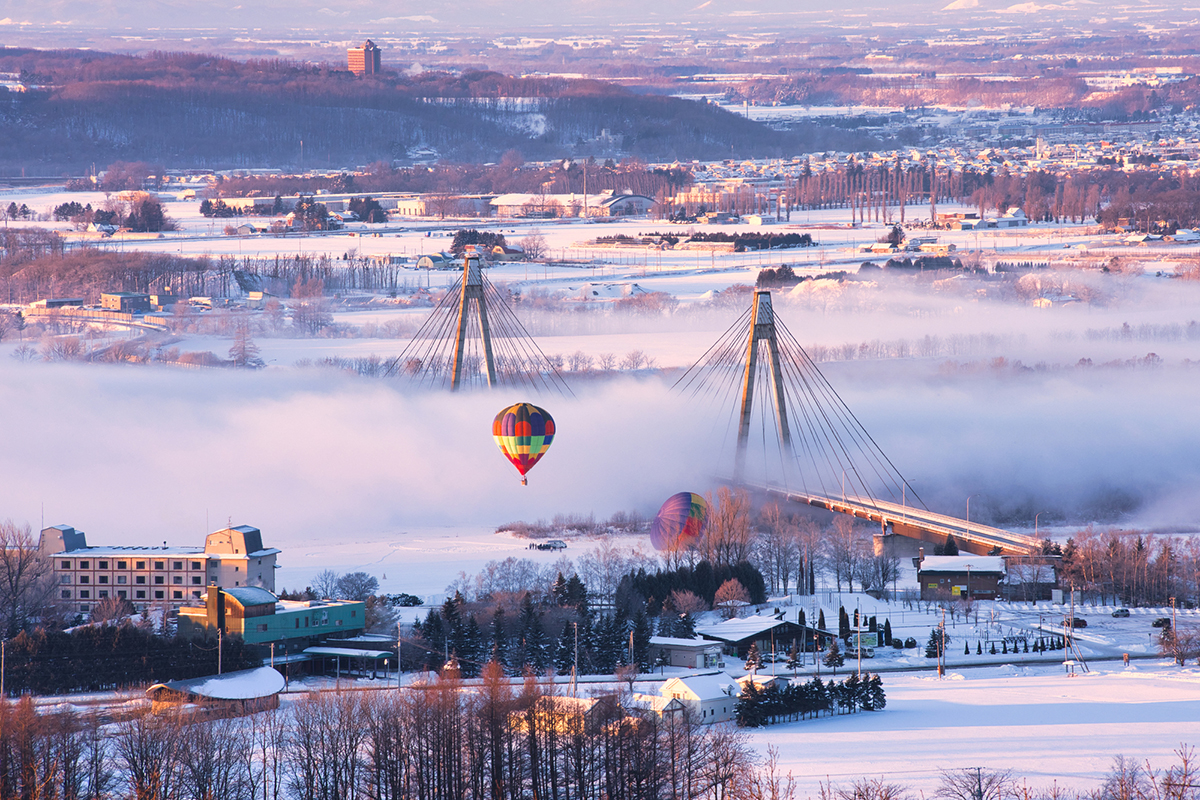
Early in the morning, a white mist can be seen over lakes and rivers. It is a fantastic sight with red-crowned cranes and swans on rivers or lakes appearing dimly in the air. This mist is called steam fog, or “ke-arashi” in the Hokkaido dialect. It refers to the fog that forms on the sea or river surface in the early morning when it is cold. Water vapor is constantly evaporating from snow, river and sea surfaces into the atmosphere, but at night, when there are no clouds or other obstructions, the ground and water surfaces are exposed to cold air due to radiative cooling. As a result, the water vapor becomes a mist of tiny water droplets.
This phenomenon itself can be seen in Tohoku and other cold regions, but it is only in Hokkaido that it can be seen in combination with red-crowned cranes. This scenery is one of the must-sees in Hokkaido.
Conclusion
How was our brief introduction to the natural phenomena that are Hokkaido winter wonders? Since these phenomena appear naturally, it is not guaranteed that you will see them if you visit the location. Even for Hokkaido locals there are not so many chances to see them. If you come to Hokkaido and see these sceneries, you are very lucky.
Hokkaido is in the grip of severe cold from December to March. The Sea of Japan side is covered with a large amount of snow brought by a cold air mass coming from Russia, and the Pacific side is enveloped in severe cold with less snow. Still, the people of Hokkaido endure the long hard winter, looking forward to the coming spring. The beautiful natural phenomena that the severe coldness brings on a whim are like a reward during the winter months. We invite you to travel around Hokkaido in search of the art of nature in winter.
Hokkaido Treasure Island Travel Agency can assist you in satisfying your travel needs. If you are interested in a tour to these landscapes, please contact us.
